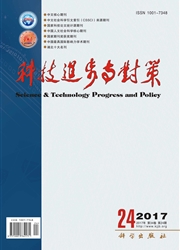

 中文摘要:
中文摘要:
创新驱动是促使经济发展方式转变的重要战略,其价值链重构有赖于技术进步和软创新等中介变量。创新驱动蕴含着人力资本等与创新相关的资本类型和形式,对经济的影响正超越传统生产要素,它所要维持的是科技创新方面的竞争力,表现为硬驱动和软驱动两方面。硬驱动与传统观念上的技术进步相对应,软驱动则在制度、政策等柔性层面辅助于技术进步,两者共同推动了价值链重构。行业技术进步对价值链的推动借助于信息网络技术;企业单个技术进步则依赖于自身努力,体现为价值链分配中向高端的转移。软驱动对价值链高端两侧的影响呈不对称性特征,从而导致了“跷跷板”效应。
 英文摘要:
英文摘要:
Innovation-driven is an important strategy accelerating the transformation of economic development pattern. Value chain construction driven by Innovation depends on such vehicle variables as technological improvement and soft innova tion. Innovation-driven implies that the influences of capital types and styles related to innovation such as human capital are transcending traditional production factors. That innovation-driven supports are the competitiveness in the domain of scientific and technological innovations. The innovation-driven concept is made up with hard and soft drive, the former of which corresponding to technological improvement in the traditional concept and the latter of which being beneficial to technological improvement from the point of systems and policies. Therefore, value chain construction is driven by hard and soft drive. Technological improvement at industry level promotes value chain to reconstruct via information internet technology, whereas individual technological improvement at firm level depends on the efforts of firm by its own, which is reflected in the orientation to high end in the process of allocating value chain. The influences of soft drive on the two sides of high-end value chain are asymmetry, which can be reduced to the effect of seesaw.
 同期刊论文项目
同期刊论文项目
 同项目期刊论文
同项目期刊论文
 期刊信息
期刊信息
